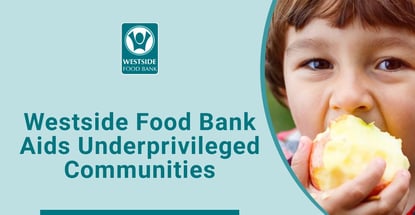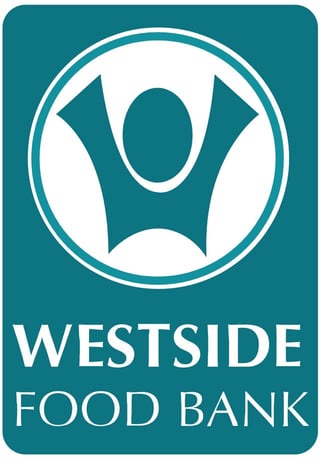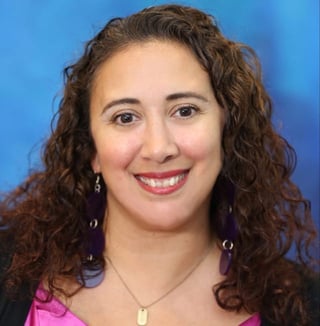
Our experts and industry insiders blog the latest news, studies and current events from inside the credit card industry. Our articles follow strict editorial guidelines.
In a Nutshell: Westside Food Bank provides nearly 5 million pounds of food annually to communities in need across Western Los Angeles County. Much of that food comes from wholesale purchases, which enable the food bank to acquire fresh, nutritious food at a low cost. Westside Food Bank aims to provide nutritionally balanced staples that meet the dietary restrictions and preferences of the people it serves. It also salvages food that’s edible but not cosmetically fit for retail, helping to reduce waste and ensure food can help the people who need it.
Westside Food Bank was founded in 1981 by a coalition of faith agencies. Each was already engaged in food assistance work, but they all wanted to make the process more efficient. So they began coordinating to accept large food donations and manage them better at scale.
Today, Westside Food Bank provides nearly 5 million pounds of food to people in Los Angeles County each year. And it provides residents in need with access to nutritious food.

“The need for our services has always been high,” said Genevieve Riutort, President and CEO at Westside Food Bank. “But we saw a big uptick at the start of the COVID-19 pandemic because so many people were out of work. Essentially, we had to double our operations. We doubled our food purchases and our distribution, and we leased some additional space. We’re doing twice as much as we were before the pandemic.”
In Los Angeles County, a two-bedroom apartment runs about $2,500. At minimum wage, a person would have to work two full-time jobs to afford median-priced accommodations.
Genevieve said that the high cost for housing is a big part of why one in five residents experiences food insecurity. Even middle income families struggle to make ends meet. To qualify for government food assistance, a family of four must make less than $53,000 per year, so households just above that level are often unable to pay for both housing and food.
Westside Food Bank helps people in that middle-income bracket bridge the gap for themselves and their families. It accomplishes its goals mainly through donations, including those from credit card rewards enthusiasts who cash in their points and miles for statement credit and pledge it to the organization. Westside Food Bank uses that to buy food in bulk and distribute it to people in need.
“They have to use those resources to stay housed,” Genevieve said. “For families that make too much to qualify for government assistance but not enough to afford all of their food, rent, and other basic needs, we try to fill in the food part. So whatever limited resources they have, they can use to meet those other needs.”
Securing Wholesale Quantities of Healthy Food
Westside Food Bank acquires food in a variety of ways. It sources products from community donations, food drives, and statewide farm-to-family programs that salvage produce that would otherwise go to waste.
“And that makes up about half of our food,” Genevieve said. “The other half of our food we purchase on the wholesale market.”
Westside Food Bank works with food brokers to purchase food wholesale by the truckload, just as a grocery store would. The food bank stretches its funding by buying in bulk, and it can acquire more food to distribute through its network of around 60 agencies.

Westside Food Bank always focuses on acquiring nutritious food that fits people’s dietary needs, no matter the source. Populations at risk of food insecurity are also often at risk of obesity, diabetes, hypertension, and various nutrition-related illnesses.
“We want to make sure that what comes out of our warehouse is a nutritionally balanced variety that also provides cultural sensitivity and accommodates dietary needs,” Genevieve said. “We worked with a nutritionist to create an official nutrition policy, which guides the types of food we distribute.”
More than half the food that Westside Food Bank distributes is fresh produce. While the organization distributes some prepackaged foods, it focuses on delivering staples, including rice, beans, oats, potatoes, onions, other fruits and vegetables, and foods high in protein. That mix ensures recipients don’t have to make a tradeoff between nutrition and a full stomach.
Community Feedback and Needs Drive Food Selection and Delivery
Some areas in Los Angeles County qualify as food deserts, and Westside Food Bank is the only source of fresh produce and high-protein foods for some of its recipients. In some cases, people don’t have access to a grocery store, only a small convenience store, limiting their options for nutritious and cost-effective food.
Beyond grocery and convenience stores, the only other options may be restaurants. Sit-down establishments tend to be pricey, which can take a toll on budgets, while fast food is loaded with fat and sodium, which affect a person’s health. Even those who have access to supermarkets need assistance as prices for food, fuel, and other basic needs are rising due to inflation.
Westside Food Bank is a valuable and nutritious alternative which provides nutritious food that satisfies the cultural and dietary preferences of various populations in the local community.
“Some of the meats are also in very high demand,” Genevieve said. “Our agencies, because they are distributing directly to clients, will work with the clients to make sure that they provide the kinds of food they need. That means kosher, low sodium, or other particular restrictions. Everyone is doing their best to accommodate the needs and the desires of the community.”
In the wake of the COVID-19 pandemic, those communities are larger than ever, especially given the cost of living in Los Angeles County. Westside Food Bank helps remove one source of anxiety and allows people to focus on other vital tasks and goals.
“When the relief comes in, when you realize there is a safety net, and that there’s going to be food in the cupboards, it’s such a tremendous relief,” Genevieve said. “It makes a person able to figure out the rest of their lives. Our kids can’t wait for better times to get the nutrition that they need today, and it’s our responsibility to take care of everyone in our community and make sure that everyone has good nutritious food to eat every single day.”
Service Organization Partnerships Minimize Food Waste
California is home to a large agricultural industry, and Westside Food Bank works within a statewide association of food banks to source food from farms across the state. Together, the food banks coordinate to share truckloads of edible food that’s not cosmetically appealing enough to sell at supermarkets.

“Most food banks don’t have the capacity to take 52 pallets of carrots,” Genevieve said. “But if a truck can stop at five food banks as it makes its way from Central California to Southern California, if each food bank can take a portion of that, we can rescue that food in a very efficient way.”
Westside Food Bank receives more than 1.5 million pounds of food each year via that cooperative enterprise. That food would otherwise go to waste, but it is delivered fresh to people through Westside and other food banks.
Westside Food Bank is the primary food source for social service agencies in western Los Angeles County. Some receive minor donations or acquire food on their own, but Westside provides 90% of the food it distributes to their recipients, Genevieve said.
“The more that we can capture on the front end before it even gets to a market, that’s a more efficient way to get high-quality food to people in need,” Genevieve said.
Fighting Food Insecurity Beyond the Pandemic
With the emergence of the COVID-19 pandemic , many Los Angeles County residents found themselves facing food scarcity, and agencies could not absorb the additional demand. As a result, Westside Food Bank began conducting direct distribution through pop-up pantries associated with local government and civic organizations. Among the entities that helped with distribution were the City of Santa Monica, the City of Los Angeles, the Culver City School District, and the Veterans Administration, Genevieve said.
“We saw a big need among veterans for food assistance, and so we have been operating a pop-up pantry on what is the largest Veterans Administration campus in the country in West Los Angeles” she said.
Because of the health risks posed by COVID-19, some food distribution shifted from walk-up to drive-through procedures. That made food more accessible since it reduced the stigma of visiting a food bank in person to receive charity. Delivering food curbside increased anonymity and revealed the greater hidden need for assistance.
Since demand increased, Westside Food Bank has doubled its purchases and is now committed to spending $2 million annually on wholesale food acquisition. That allows the organization to save money, control the nutritional value of the food it delivers, and fill more food gaps present in the communities it serves.
“We rely very heavily on the community,” Genevive said. “Less than 20% of our support comes from government sources. The largest source of our funding is our community, and that means individuals, as well as private foundations, faith-based organizations, schools, and scouting groups. But community support is the bread and butter of how the food bank maintains our operations and how we get the best food out to our community.”

![9 Comenity Bank Store Card Alternatives ([updated_month_year]) 9 Comenity Bank Store Card Alternatives ([updated_month_year])](https://www.cardrates.com/images/uploads/2019/11/Comenity-Bank-Store-Card-Alternatives--1.jpg?width=158&height=120&fit=crop)
![8 Credit Cards with No Bank Account Needed ([updated_month_year]) 8 Credit Cards with No Bank Account Needed ([updated_month_year])](https://www.cardrates.com/images/uploads/2020/01/Credit-Cards-with-No-Bank-Account-Needed.jpg?width=158&height=120&fit=crop)
![8 Bank Signup Bonus Credit Cards: $200 – $750 ([updated_month_year]) 8 Bank Signup Bonus Credit Cards: $200 – $750 ([updated_month_year])](https://www.cardrates.com/images/uploads/2021/08/Bank-Signup-Bonus-Cards.jpg?width=158&height=120&fit=crop)
![5 Best Bank of America Cash Back Credit Cards ([updated_month_year]) 5 Best Bank of America Cash Back Credit Cards ([updated_month_year])](https://www.cardrates.com/images/uploads/2023/01/Bank-of-America-Cash-Back-Credit-Cards.jpg?width=158&height=120&fit=crop)
![3 Best Bank of America Credit Cards for Travel ([updated_month_year]) 3 Best Bank of America Credit Cards for Travel ([updated_month_year])](https://www.cardrates.com/images/uploads/2023/03/Best-Bank-of-America-Credit-Cards-For-Travel.jpg?width=158&height=120&fit=crop)
![12 Bank of America Credit Card Limits ([updated_month_year]) 12 Bank of America Credit Card Limits ([updated_month_year])](https://www.cardrates.com/images/uploads/2023/04/Bank-of-America-Credit-Card-Limits.jpg?width=158&height=120&fit=crop)
![5 Bank of America Contactless Credit Cards ([updated_month_year]) 5 Bank of America Contactless Credit Cards ([updated_month_year])](https://www.cardrates.com/images/uploads/2023/05/Bank-of-America-Contactless-Credit-Cards.jpg?width=158&height=120&fit=crop)